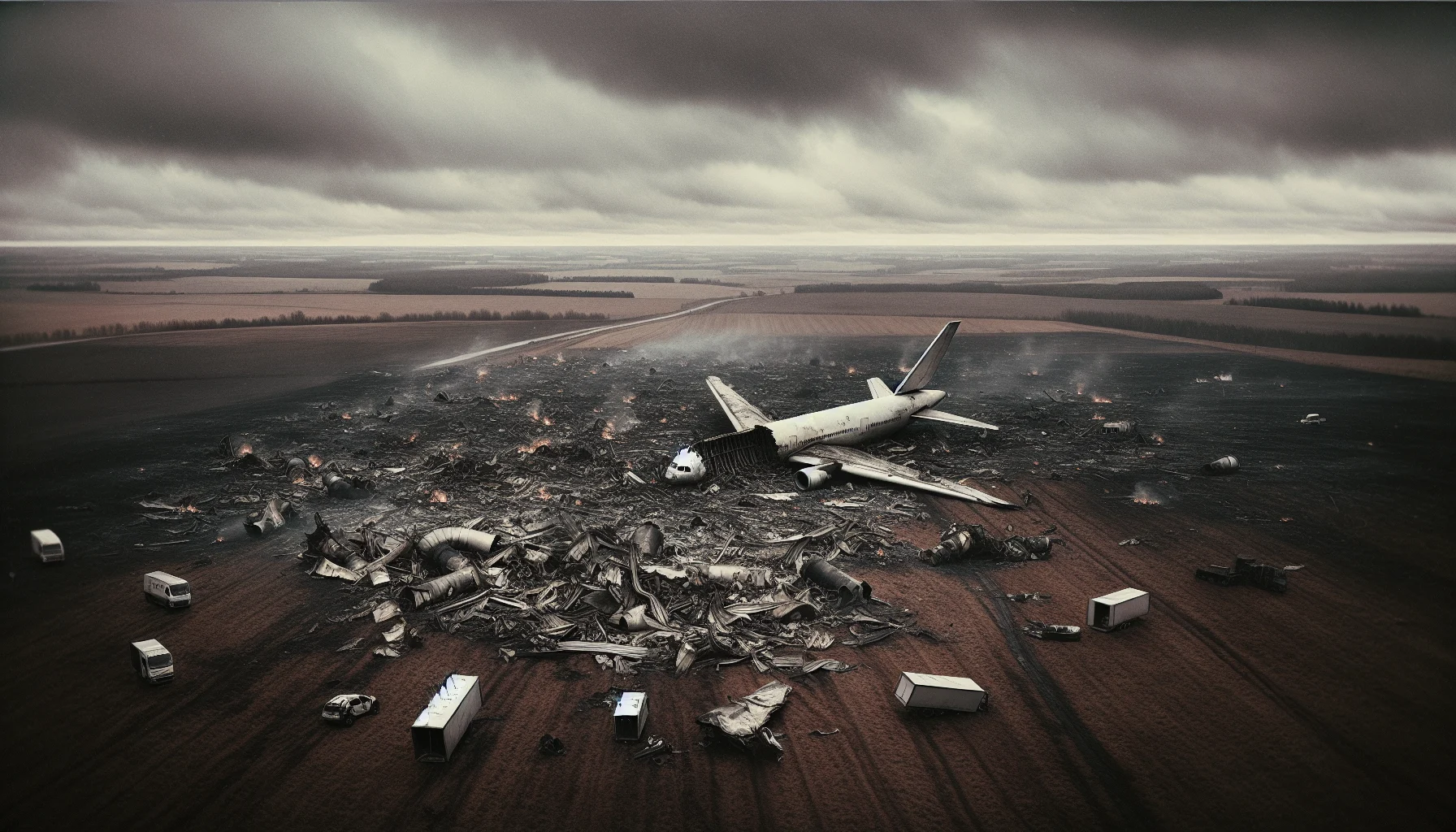
American Airlines Flight 191 Crash
by: The Calamity Calendar Team
May 25, 1979
Prelude to Tragedy
On the afternoon of May 25, 1979, the bustling terminals of Chicago O'Hare International Airport hummed with the usual orchestration of voices, distant engine roars, and the faint echo of flight announcements — a familiar symphony to all those who travel. But at the heart of this routine was American Airlines Flight 191, poised to embark on a journey from Chicago to Los Angeles. Passengers settled into their seats aboard the McDonnell Douglas DC-10, an aircraft noted for its capacity and sleek design but not without controversy regarding its safety.
Flight 191 prepared for departure. The anticipation of those aboard, from families heading west to businesspeople planning their next meeting, filled the cabin atmosphere. Everything was set for another transcontinental flight, a routine operation, though tinged with the thrill of airborne adventure.
A Fatal Sequence of Events
It was around 2:50 PM when Flight 191 commenced its takeoff from Runway 32R. From the cockpit, everything seemed as it should. The aircraft rumbled and gained speed, swiftly becoming airborne. Yet, with alarming swiftness, a disaster unfolded just seconds after liftoff: the left engine tore away from the wing, flipping up and over before crashing to the runway below—it was a sight terrifying to witness and catastrophic in consequence.
The loss of the engine severed critical hydraulic lines, setting in motion a cascade of failures that left the aircraft mortally wounded. Without the hydraulic power, the slats on the left wing retracted, stealing critical lift and condemning the jet to a starboard struggle. At 2:51 PM, the plane, banking heavily to the left, spiraled downward and into the tragic embrace of the earth—crashing into an open field beside a trailer park, its occupants thrust into the annals of aviation tragedy.
In the Wake of Destruction
The scene was apocalyptic. Fire and debris scattered the field and the decimated trailers. Onlookers could scarcely process the eruption they had just witnessed, the fleeting roar overhead that ended with a resounding, gut-wrenching earthward crash. Emergency services rushed to the scene with hope for survivors dashed by the grim reality that none on board survived. The tragedy claimed 273 lives, including two unfortunate souls on the ground.
Both Chicago's emergency response and the swift mobilization of the National Transportation Safety Board (NTSB) underscored the gravity of the incident. In the days that followed, as investigators sifted through the remnants of Flight 191, a narrative of procedural failures and systemic oversight began to emerge.
Thanks for subscribing!
A Conspiracy of Errors
This catastrophe was not merely mechanical disaster but also a stark lesson in procedural complacency. The cause, investigators determined, was a flawed maintenance practice that damaged the pylon assembly meant to secure the engine to the wing. A shortcut taken in engine replacement left unseen cracks, ticking like time bombs until this fateful day.
The aviation world took notice, with the Federal Aviation Administration (FAA) ordering the grounding and inspection of all DC-10s worldwide. Airlines scrambled to reevaluate maintenance protocols, ensuring such a lapse would never be so hidden nor so fatal again.
Reform from Ruin
The legacy of American Airlines Flight 191 was twofold: a deep scar in the memories of those who lost loved ones and a clarion call for aviation reform. Maintenance procedures underwent rigorous overhaul, documentation became tighter, and oversight stricter—a small consolation perhaps, but necessary to rebuild trust in an industry relying on it.
Despite the horrific cost, this disaster paved a path towards a safer aviation future, ensuring that its name, so heavily imprinted in tragedy, heralded the impetus for profound change. Now, as planes take flight, fortified by the lessons of Flight 191, there rests an unspoken vow—never again to close its eyes to the perilous whispers of complacency.
American Airlines Flight 191 thus stands as a solemn reminder—a monument to the vigilance required in the skies and the progress that emerges from the shadow of past missteps. Each takeoff and every landing bears witness to those lessons, honoring those lives by affirming the safety of many more.
Stay in the Loop!
Become a Calamity Insider and get exclusive Calamity Calendar updates delivered straight to your inbox.
Thanks! You're now subscribed.